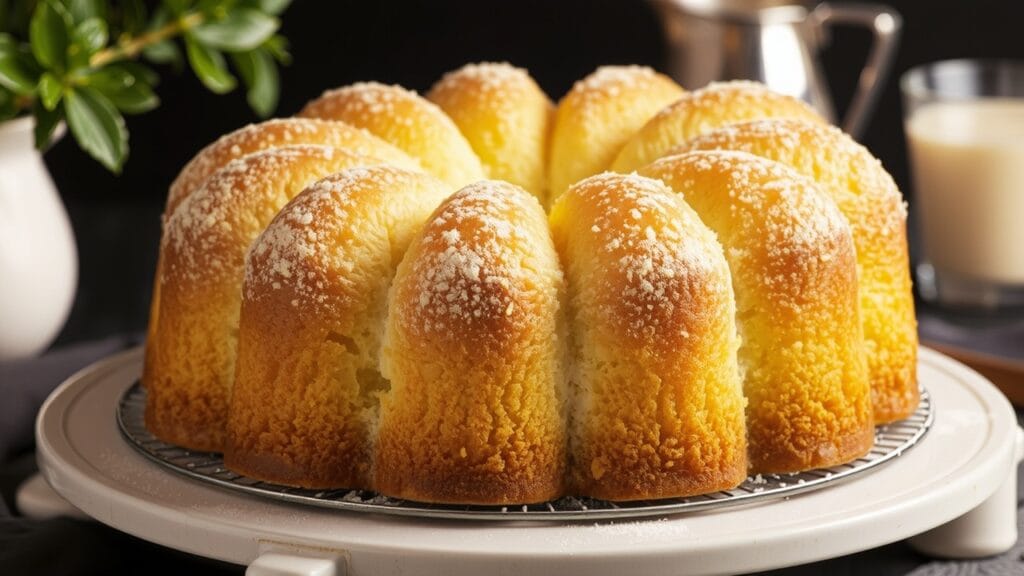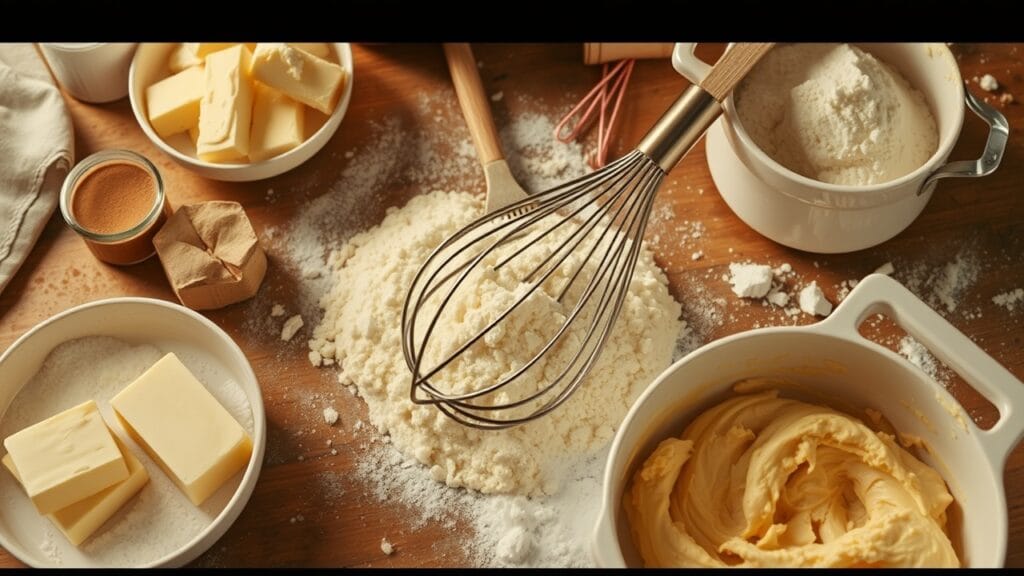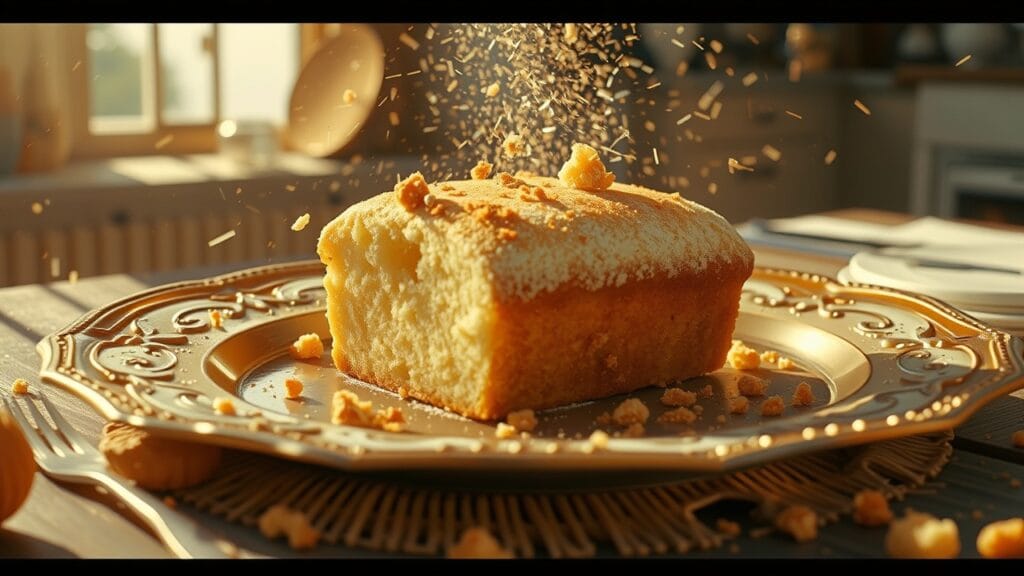Introduction
Pound cake is a classic dessert that has graced countless tables with its rich, buttery flavor and dense yet tender crumb. Whether you’re enjoying a slice with your afternoon tea or serving it as a sweet end to a festive meal, pound cake is a timeless favorite. But have you ever wondered what makes this delightful cake rise? Understanding the science behind its rise can help you achieve perfect results every time. So, let’s dive into the world of pound cakes and uncover the secrets to their rise.

The Basics of Pound Cake
History of Pound Cake
Pound cake has a rich history that dates back to the 18th century. Its name comes from the traditional recipe, which called for a pound each of flour, butter, sugar, and eggs. This simple ratio made it easy to remember and provided a solid foundation for many variations. Over the centuries, bakers have experimented with different ingredients and techniques, but the essence of pound cake has remained unchanged: a moist, dense, and buttery treat.
Traditional Ingredients
The traditional ingredients for pound cake are straightforward: flour, butter, sugar, and eggs. Each ingredient plays a crucial role in the cake’s texture and flavor. Flour provides structure, butter adds richness, sugar sweetens the cake, and eggs act as a binder and leavening agent. While modern recipes may include additional ingredients like baking powder or milk, the classic pound cake relies on these four main components.
> “The simplicity of pound cake ingredients is what makes it so versatile and beloved. With just a few basics, you can create a delicious and satisfying dessert.”
The Science Behind Cake Rising
Role of Leavening Agents
Leavening agents are substances that cause the dough or batter to rise by producing gas. In the case of pound cake, the primary leavening agents are eggs. When eggs are beaten, they trap air, which expands during baking and causes the cake to rise. Some modern recipes also use baking powder or baking soda to enhance this effect, providing additional lift and a lighter texture.
Chemical Reactions in Baking
Baking is a fascinating interplay of chemical reactions. When the batter is heated, the air trapped in the eggs expands, and the proteins in the eggs coagulate, providing structure. Additionally, if baking powder or baking soda is used, they react with acidic components in the batter to produce carbon dioxide gas. This gas creates bubbles that help the cake rise and develop a light, airy texture.
“Understanding the science behind baking can transform your approach in the kitchen. It’s not just about following a recipe; it’s about knowing how and why ingredients work together.”
Key Ingredients for Rising
Eggs and Their Function
Eggs are a powerhouse ingredient in baking, especially for pound cake. They provide moisture, fat, and structure. When beaten, eggs incorporate air into the batter, which expands during baking and helps the cake rise. The proteins in eggs also coagulate when heated, giving the cake its structure and stability. For the best results, use large, fresh eggs at room temperature.
Butter and Its Role
Butter is essential for both flavor and texture. It adds richness and moisture, contributing to the cake’s tender crumb. When creamed with sugar, butter also helps incorporate air into the batter. This creaming process is crucial for pound cake, as it ensures a fine, even texture and contributes to the pound cake rise.
Sugar and Its Impact
Sugar does more than just sweeten the cake; it plays a critical role in its structure. When creamed with butter, sugar helps incorporate air into the batter. It also interacts with the proteins in the eggs and flour, helping to tenderize the cake and promote a finer crumb. Additionally, sugar contributes to the Maillard reaction during baking, giving the cake its golden-brown crust.
“The combination of eggs, butter, and sugar is the backbone of a successful pound cake. Each ingredient contributes to the rise, texture, and flavor, creating a harmonious result.”
Techniques to Ensure Proper Rising
Proper Mixing Methods
How you mix your ingredients can significantly impact the rise of your pound cake. Here are some key techniques:
- Creaming Butter and Sugar: Beat the butter and sugar together until light and fluffy. This process incorporates air into the batter, which is essential for the cake’s rise.
- Beating Eggs: Add eggs one at a time, beating well after each addition. This ensures they are fully incorporated and helps trap more air in the batter.
- Folding in Flour: Gently fold the flour into the batter to avoid overmixing, which can deflate the air bubbles and result in a dense cake.
Correct Oven Temperature
Baking your pound cake at the right temperature is crucial for proper rising. Here are some tips:
- Preheat the Oven: Always preheat your oven to the correct temperature before baking. This ensures even cooking and proper rising from the start.
- Bake at a Moderate Temperature: A temperature of 325°F (163°C) is ideal for pound cake. It allows the cake to rise slowly and evenly without the risk of the exterior setting too quickly.
Importance of Measuring Ingredients
Accurate measurements are essential for the success of your pound cake. Here’s why:
- Balance of Ingredients: The ratio of flour, butter, sugar, and eggs must be balanced to ensure proper rise and texture.
- Consistency: Using a kitchen scale to measure ingredients by weight rather than volume can provide more consistent results.
> “Attention to detail in mixing, baking, and measuring can make all the difference in achieving a beautifully risen pound cake.”
Block Quote
> “Baking is both an art and a science. Mastering the techniques and understanding the ingredients can elevate your pound cake from good to exceptional.”
Block Quote
“The key to a perfect pound cake lies in the details. From creaming the butter and sugar to beating the eggs, each step plays a vital role in the final rise and texture.”
Common Problems and Solutions
Cake Not Rising Enough
One of the most frustrating issues when baking a pound cake is when it doesn’t rise enough. This can lead to a dense, heavy cake rather than the light, fluffy texture you’re aiming for. There are several potential reasons for this problem:

- Old Leavening Agents: If you’re using baking powder or baking soda, ensure they’re fresh. These ingredients lose their effectiveness over time.
- Incorrect Ratios: The balance of ingredients is crucial. Too much or too little of any one ingredient can affect the rise.
- Overmixing: Beating the batter too much can knock out the air you’ve incorporated, leading to a dense cake.
Cake Rising Unevenly
An unevenly risen cake can be both disappointing and tricky to serve. This issue is often caused by:
- Uneven Oven Temperature: Hot spots in your oven can cause the cake to rise more in some areas than others. Using an oven thermometer can help you identify and adjust for these hot spots.
- Incorrect Batter Distribution: Make sure the batter is evenly spread in the pan before baking.
- Opening the Oven Door: Avoid opening the oven door too often while the cake is baking. The sudden change in temperature can cause the cake to rise unevenly.
Cake Collapsing After Baking
Few things are more disheartening than watching your perfectly risen pound cake collapse after baking. This can happen due to:
- Underbaking: If the cake isn’t fully baked, it may collapse as it cools. Use a toothpick or cake tester to check for doneness.
- Too Much Leavening: Using too much baking powder or baking soda can cause the cake to rise too quickly and then collapse.
- Cooling Too Quickly: Let the cake cool gradually. A sudden temperature change can cause the structure to weaken and collapse.
“Baking is a delicate balance of science and art. Addressing common issues like uneven rising and collapsing requires understanding both the ingredients and techniques.”
Alternative Ingredients and Their Effects
Using Baking Powder or Baking Soda
Traditional pound cake recipes rely on the air incorporated during the mixing process topound cake rise rise, but modern variations often include baking powder or baking soda. These leavening agents work by releasing carbon dioxide gas, which helps the batter rise. Here’s how they differ:
- Baking Powder: Contains both an acid and a base and reacts when mixed with wet ingredients and again when heated.
- Baking Soda: Requires an acidic ingredient (like buttermilk or lemon juice) to activate it and create the rising effect.
Using these leavening agents can result in a lighter, fluffier pound cake, but it’s important to use the correct amount. Too much can cause the cake to rise too quickly and then collapse.
Substituting Ingredients
Sometimes, you may need to substitute ingredients due to dietary restrictions or personal preferences. Here are some common substitutions and their effects on the cake’s rise:
- Egg Substitutes: Applesauce, mashed bananas, or commercial egg replacers can be used instead of eggs. These substitutes add moisture but may not provide the same structure and lift as eggs.
- Butter Alternatives: Margarine or plant-based butter can replace traditional butter. Be aware that these alternatives may have different moisture content, which can affect the cake’s texture.
- Flour Alternatives: Gluten-free flour blends can replace all-purpose flour, but they may require additional binding agents like xanthan gum to mimic the structure provided by gluten.
“Experimenting with alternative ingredients can be rewarding, but it’s important to understand how each substitution will impact the cake’s rise and texture.”
Tips for Perfect Pound Cake
Choosing the Right Pan
The choice of baking pan can affect how well your pound cake rises. Here’s what to consider:
- Size and Shape: Use the pan size specified in your recipe. Using a pan that’s too small can cause the cake to overflow, while a pan that’s too large can result in a flat cake.
- Material: Metal pans conduct heat well and promote even baking. Glass or ceramic pans may require adjustments to baking time and temperature.
- Preparation: Grease and flour the pan thoroughly to prevent sticking. This also helps the cake rise evenly.
Timing and Patience
Timing is everything when baking a pound cake. Here are some tips to ensure success:
- Don’t Rush: Allow plenty of time for each step, from creaming the butter and sugar to folding in the flour.
- Monitor Baking Time: Use the baking time as a guideline but rely on visual cues and a cake tester to check for doneness.
- Cooling Gradually: Let the cake cool in the pan for about 10-15 minutes before turning it out onto a wire rack to cool completely.
“Patience and attention to detail can turn a good pound cake into a great one. Take your time and enjoy the process.”
Block Quote
“The beauty of pound cake lies in its simplicity. With the right techniques and a bit of patience, you can achieve a perfectly risen, delicious cake every time.”
Nutrition Facts (Per Serving for Classic Pound Cake)
| Nutrient | Amount |
|---|---|
| Calories | 350 |
| Total Fat | 18g |
| Saturated Fat | 11g |
| Cholesterol | 80mg |
| Sodium | 220mg |
| Total Carbohydrates | 40g |
| Dietary Fiber | 1g |
| Sugars | 25g |
| Protein | 4g |
Conclusion
Understanding what makes pound cake rise is essential to achieving that perfect texture and flavor. From the role of key ingredients like eggs and butter to the importance of proper mixing and baking techniques, each step in the process contributes to the final result. By paying attention to these details, you can bake a pound cake that is light, fluffy, and utterly delicious.
Pound cake’s simplicity is its strength. With just a few basic ingredients and some tried-and-true techniques, you can create a dessert that is both comforting and impressive. So, the next time you’re in the kitchen, remember the science behind thepound cake rise rise and enjoy the satisfaction of baking a perfect pound cake.
“Baking is an art that blends science, creativity, and a bit of patience. Master these elements, and you’ll have a pound cake that rises beautifully every time.”
Frequently Asked Questions
Can I Make Pound Cake Without Eggs?
Yes, you can make pound cake without eggs by using substitutes. Applesauce, mashed bananas, or commercial egg replacers can be used as alternatives. However, be aware that these substitutes may affect the texture and rise of the cake. Eggs provide structure and leavening, so replacing them may result in a denser cake. Experiment with different substitutes to find the one that works best for your recipe.
How Do I Store Pound Cake?
Storing pound cake properly is essential to maintaining its moisture and flavor. Here are some tips:
- Room Temperature: Wrap the cake tightly in plastic wrap or aluminum foil and store it at room temperature for up to three days.
- Refrigeration: If you need to keep the cake for longer, you can refrigerate it. Wrap it well to prevent it from drying out, and bring it to room temperature before serving to enjoy its full flavor and texture.
- Freezing: Pound cake freezes well. Wrap it in plastic wrap and then in aluminum foil, or place it in an airtight container. It can be frozen for up to three months. Thaw the cake in the refrigerator overnight or at room temperature for a few hours before serving.
Can I Freeze Pound Cake?
Absolutely! Freezing pound cake is a great way to extend its shelf life. Here’s how to do it:
- Wrap the Cake: Wrap the cake tightly in plastic wrap to prevent freezer burn.
- Double Wrap: For extra protection, wrap the cake in aluminum foil or place it in an airtight container.
- Label and Date: Write the date on the package so you remember when you froze it.
- Thawing: To thaw, place the cake in the refrigerator overnight or let it sit at room temperature for a few hours.
“Freezing pound cake allows you to enjoy a delicious slice whenever you like, without sacrificing quality. Just remember to wrap it well!”
Ingredients and Quantities for Classic Pound Cake
| Ingredient | Quantity |
|---|---|
| All-Purpose Flour | 2 cups |
| Unsalted Butter | 1 cup (2 sticks) |
| Granulated Sugar | 2 cups |
| Large Eggs | 4 |
| Vanilla Extract | 1 tsp |
| Baking Powder (optional) | 1 tsp |
| Salt | 1/2 tsp |

Final Thoughts
Baking a perfect pound cake is a rewarding experience that brings together simple ingredients to create something extraordinary. Whether you’re a seasoned baker or just starting out, understanding the science behind what makes pound cake rise will help you achieve consistently excellent results. So, gather your ingredients, follow the tips and techniques outlined here, and enjoy the process of creating a delicious pound cake that will impress everyone who takes a bite.
“The journey of baking pound cake is filled with sweet rewards. Embrace the process, and let each step bring you closer to a perfectly risen, delectable cake.”

